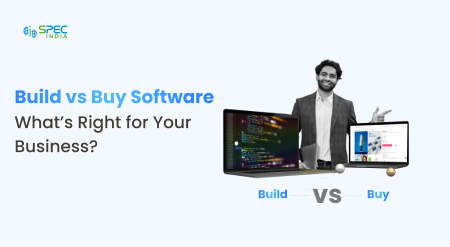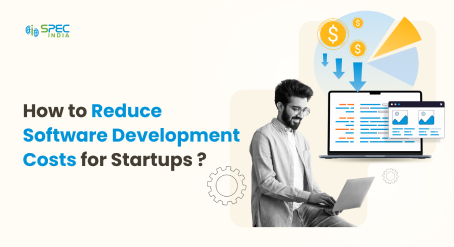Lean vs Agile: Which Project Execution Approach To Choose?
The software development arena has undergone revolutionary changes in the last few decades. Approaches to software development have been changing over the years. With changes in organizational demands, behavior, and infrastructure, software development methodologies have evolved, bringing in more flexibility, efficacy, robustness, successful returns, and increased productivity.
Two such popular names in the world of project execution methodologies are Lean and Agile. Though they have a lot of similarities, particular distinctions differentiate their qualities and features. Often, they are used interchangeably. It is up to the project owners and managers to understand and analyze the difference between the two and choose wisely.
Organizations must be adaptable and flexible to react to changing market scenarios and offer the utmost customer satisfaction while driving software development in the right direction. Lean vs Agile is a constant comparison that is being made as methodologies that offer great innovation, speed, and good quality.
The Agile vs Lean evaluation gets interesting as they share common objectives and principles. This is one big reason organizations tend to get confused about which one to choose. Hence, understanding both in detail and then comparing them against the jotting parameters is important.
Before we evaluate the similarities and differences between Lean and Agile, let us go through their characteristics and salient features.
What is Lean Methodology?
The lean software development process depends upon the fundamentals of lean manufacturing. It focuses on offering great value to clients, reducing waste, and ensuring higher productivity. It originated through the manufacturing processes in the Toyota Production System.
It emphasizes that businesses must ensure processes that help in lessening waste and increasing consumer value, with minimal resources. It empowers organizations to act quickly and effectively, as per customer needs.
Basic Principles of Lean Development
- Eliminating waste in the form of incomplete work, defects, etc.
- Building quality into all that users operate on in the front and the backend
- Faster delivery with shorter iterations and test-driven development
- Creating knowledge to enhance team learning and gather feedback
- Showing respect with transparent communication and leadership
- Full optimization ensures a complete process and not just a limited one
- Postponing commitment with a scare of over-planning
As we study Lean development, we see that organizations following the Lean methodology are driven to offer enhanced client value via continual enhancement of processes and products. Lean Software Development refers to waste as redundant processes, duplicate activities, and other low-value tasks. This process does not go by the prescribed rules of practice. Rather, it is open-ended, flexible, and goes by organizational needs and iterative development.
Key Benefits of Lean
- Enhanced productivity
- Lessened waste and better resource allocation
- More efficient matching of market demand
- Maximization of profits with the least waste
- Focus on productive elements adding value
- Offer quality with better customer satisfaction
What is Agile Methodology?
The Agile methodology is a popular approach that goes for iteration and fast execution of changes as needed. It focuses on the importance of teamwork, customers, and agile developers.
Agile Software Development, a group of software development methods based on iterative and incremental development, enforces collaboration between organized, collaborative teams for evolving requirements and their solutions, compelling responsive planning, evolutionary development, and rapid and flexible response to change.
Basic Agile Principles
- Client satisfaction is the topmost focus area
- Creation of projects around resources who are willing to work
- In-person interaction to be promoted
- Self-organized teams have technical superiority
- Simple and sustainable development
- Customer collaboration with regular communication
- Cooperation between stakeholders in any project
It goes by the Agile Manifesto which says
We are uncovering better ways of developing software by doing it and helping others do it. Through this work we have come to value:
Individuals and interactions over processes and tools
Working software over comprehensive documentation
Customer collaboration over contract negotiation
Responding to change over following a plan
That is, while there is value in the items on the right, we value the items on the left more.
As we study the Agile methodology, we see that Agile is a novel approach that has different users and cross-functional teams. Because of its agile nature, it is easy to implement for better business solutions. There is early delivery and regular enhancement with fast changes in requirements on a routine basis.
Key Benefits of Agile
- Enhanced client satisfaction
- Well-tested and good-quality output
- Better control and regular reporting
- Flexibility and more interaction
- Lesser risks and more risk control
- Collaboration between teams
Lean vs Agile: The Similarities
- Focus on customer value and keeping clients satisfied
- Increase project management speed for businesses
- Boost efficacy, productivity, and process optimization
- Teamwork, collaboration, and trust in each other
- Emphasis on people involved rather than tools
- Continual improvement and regular inspections
- More value to clients by responding to clients proactively
- Incorporate iterative and short development
- Empowered teams with no micromanagement
Lean vs Agile: Evaluating Two Top Software Development Methodologies
| Parameters |
Lean |
Agile |
| Overview |
A software development approach derived from a manufacturing model. Based on manufacturing principles and processes. Builds small batches. It is like creating a new thing for the first time, for a single use. It is all about eliminating waste. |
A software development approach based on iterative development. Based on frameworks like Scrum and Kanban, XP. Assists in product development. It is like creating the same thing again. Depends on cross-collaboration. |
| Principle |
Focuses on development speed and product quality |
Focuses on the value and scope of the product |
| History |
The Toyota Production System (TPS) was created to lessen inventory costs and eliminate waste. The Lean approach for software was later based on this manufacturing model. |
Earlier, traditional methods like the waterfall approach were used, which were time-consuming and expensive. To deal with this, the Agile Manifesto was created. |
| Life Cycle |
Comprises of seven principles that offer more value to the working process |
Comprises six phases that offer more value to the working software |
| Delivery |
It delivers in terms of value |
It delivers in terms of the product |
| Application in Model |
Applies the working product in its model |
Applies heuristics in its model |
| Inbuilt Services |
Can be utilized to create a tiny number of products |
Can be utilized to create any type of product development |
| Flexibility |
Helps in the inspection and adaptation of products |
Offers great flexibility in the usage of frameworks |
| Approach |
Follows a top-down approach, viewing the entire process as a whole |
Follows a bottom-up approach, breaking work into the smallest iterations |
| Team Involvement |
Lean takes into consideration the entire team or organization |
Agile considers specified team roles and processes |
| Type of Projects |
Lean is fit for projects that are repeatable by nature |
Agile is fit for projects that are new or innovative |
| Focus Area |
Enhancing processes for better customer value, with quality being a parameter |
Assisting in creating better products via small and regular iterations |
| Speed and Time-To-Market |
The main thing is to deliver fast through iteration and speed, eliminating redundancy and overplanning |
The focus is on creating small units for the betterment of processes, along with improved time-to-market |
| Value |
Value is offered by faster product delivery, without any wastage of time or resources |
Value is offered as a changing term with continuous client feedback to improve the product |
| Team Models |
Work cells, segregating variability, relationship service cells |
Self-managing teams, cross-functional teams, specialist pools |
| Working Methods |
Lean management practices, continual enhancement, self-monitoring, and automation |
Scrum, an extreme programming method, Sprints |
| Key Objective |
The key objective of Lean is to remove all unwanted factors that don’t add value to the project development |
The key objective of Agile is to create a product that fulfills the requirements of end-users and stakeholders |
Lean vs Agile: When to Use What or Use Both Together?
With such similarities and differences between Lean and Agile, it is tough to make a call on whether to use either or both. Many say both are exclusive of each other based on different fundamentals. But that is not the case. Both methodologies have been effectively offering similar outputs and hence, can work together, taking the best of both.
As we compare Agile vs Lean, there is a growing number of organizations that are willing to implement both, based on their needs. While Lean attempts to enhance the process of delivering the product, Agile attempts to enhance the product itself. Both are equally important. Hence, opting for both can turn out to be much more effective in project execution.
Lean vs Agile: Which One to Choose
While we compare the two project execution models – Lean vs Agile, based on different parameters like organizational objectives, project timelines, skills of team members, project management objectives, etc., we see that it may turn out beneficial to use the best of both.
Organizations just need to be sure, while comparing Agile versus Lean, about what their focus is – enhancing the process (Lean is better) or enhancing the product (Agile is better). And if the answer is both, then choosing both, Lean and Agile, could be an ideal choice.
Finally, choosing either is going to yield good results, provided it is implemented keeping in mind its principles and working process!
SPEC INDIA, as your single stop IT partner has been successfully implementing a bouquet of diverse solutions and services all over the globe, proving its mettle as an ISO 9001:2015 certified IT solutions organization. With efficient project management practices, international standards to comply, flexible engagement models and superior infrastructure, SPEC INDIA is a customer’s delight. Our skilled technical resources are apt at putting thoughts in a perspective by offering value-added reads for all.
Delivering Digital Outcomes To Accelerate Growth
Let’s Talk
 One tree
One tree 







